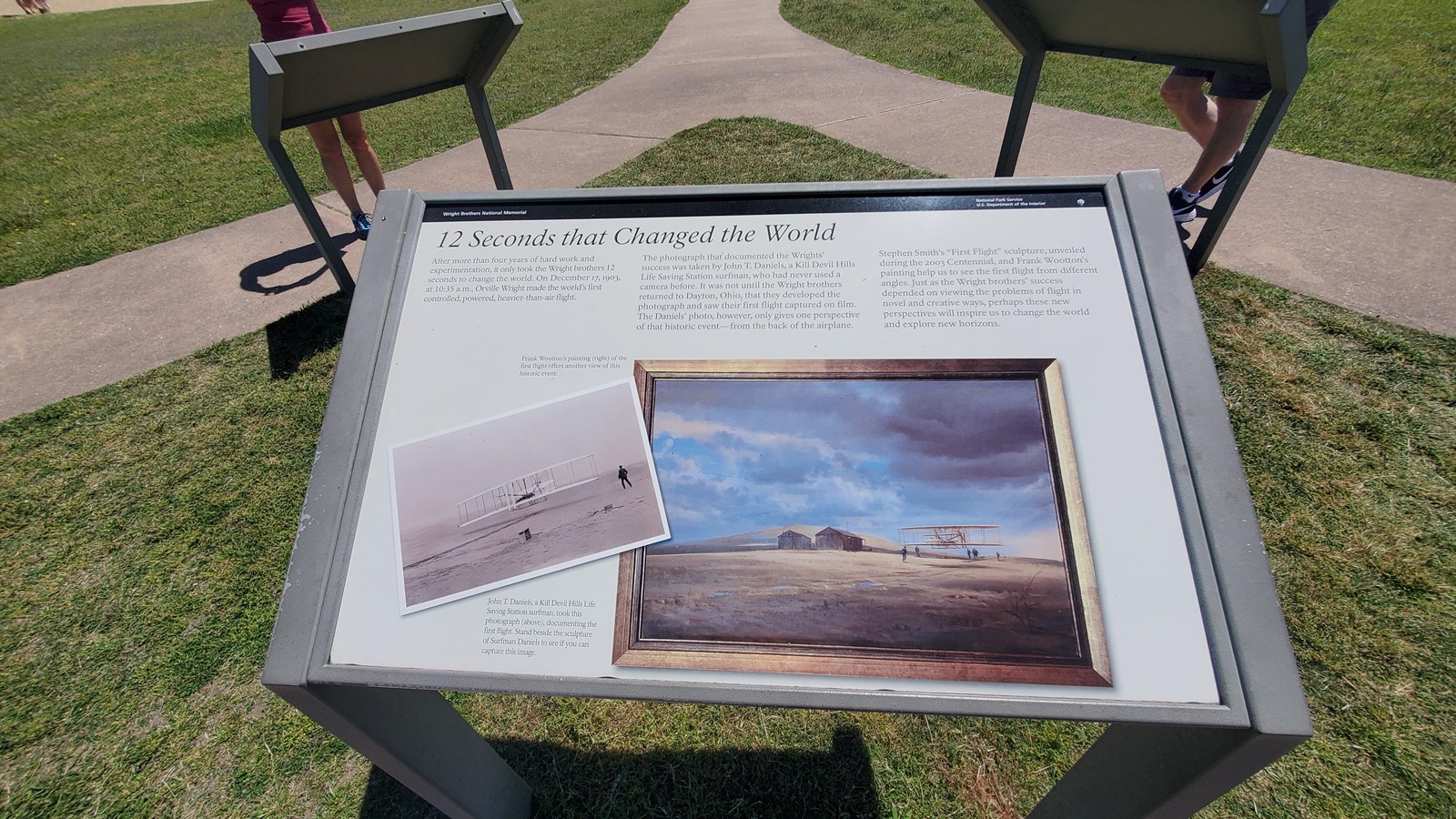Last updated: June 24, 2025
Place
12 Seconds that Changed the World

NPS photo
After more than four years of hard work and experimentation, it only took the Wright Brothers 12 seconds to change the world. On December 17, 1903, at 10:35 a.m., Orville wright made the world’s first controlled, powered, heavier-than-air flight. The photograph that documented the Wrights’ success was taken by John T. Daniels, a Kill Devil Hills Life Saving Station surfman, who had never used a camera before. It was not until the Wright Brothers returned to Dayton, Ohio, that they developed the photograph and saw their first flight captured on film. The Daniels’ photo, however, only gives one perspective of that historic event – from the back of the airplane.Stephen Smith’s “First Flight” sculpture, unveiled during the 2003 Centennial, and Frank Wootton’s painting help us see the first flight from different angles. Just as the Wright Brothers’ success depended on viewing the problems of flight in novel and creative ways, perhaps these new perspectives will inspire us to change the world and explore new horizons.
